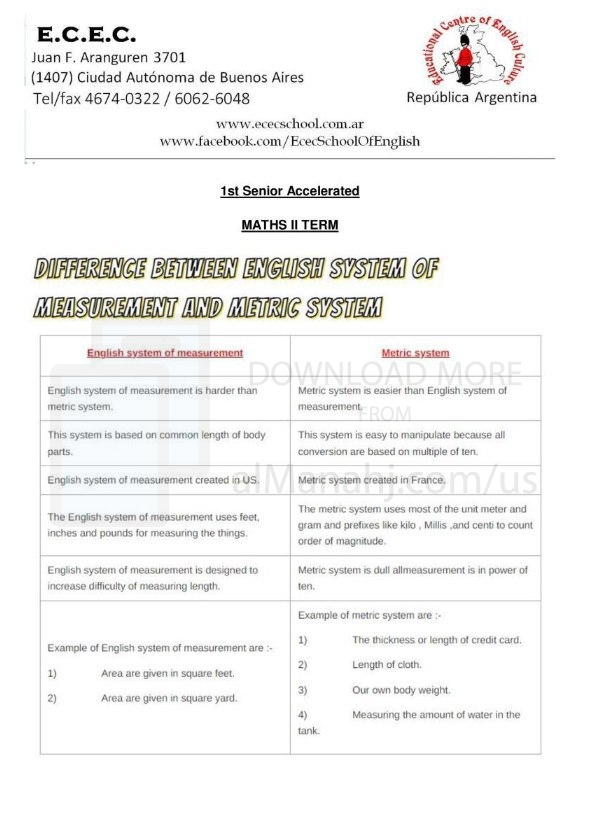File info: A worksheet about the difference between the system of measurement and the metric system is an educational resource designed to help students understand and compare these two systems of measurement used around the world. The worksheet aims to provide information, activities, and questions that promote a deeper understanding of the characteristics, units, and applications of these measurement systems. Here's a description of what a worksheet about the difference between the system of measurement and the metric system might include:
1. Introduction to Measurement Systems: The worksheet begins with an introduction to the concept of measurement systems. It explains that a measurement system is a set of units and standards used to quantify and compare physical quantities. This section may include examples of common measurements, such as length, mass, and time.
2. System of Measurement: The worksheet provides information about the system of measurement, which is commonly referred to as the Imperial system or the U.S. customary system. It explains that this system is primarily used in the United States and a few other countries. It covers the units of measurement in this system, such as inches, feet, pounds, and gallons. This section may include examples of situations where the system of measurement is used, such as in construction or cooking.
3. Metric System: The worksheet introduces the metric system, also known as the International System of Units (SI). It explains that the metric system is a decimal-based system used by the majority of countries around the world. It covers the base units of measurement in the metric system, such as meter, kilogram, and liter, as well as the prefixes used to denote multiples or fractions of these units (e.g., kilo-, milli-, centi-). This section may include examples of situations where the metric system is used, such as in scientific experiments or international trade.
4. Units of Measurement Comparison: The worksheet provides a comparison of the units of measurement between the system of measurement and the metric system. It may include tables or charts that show equivalent units in both systems, allowing students to make connections and identify the differences in scale and conversions between the two systems. This section may also include conversion exercises for students to practice converting between units of measurement in the two systems.
5. Advantages of the Metric System: The worksheet highlights the advantages of the metric system over the system of measurement. It explains that the metric system is based on a logical and consistent decimal system, making it easier to use and convert between units. It also emphasizes the international standardization of the metric system, allowing for seamless communication and collaboration across different countries and disciplines.
6. Activities and Questions:
The worksheet includes various activities and questions to reinforce understanding and promote critical thinking. This may include fill-in-the-blank exercises, multiple-choice questions, comparing measurements in different systems, or analyzing real-world scenarios where the choice of measurement system is important.
7. Summary and Reflection: The worksheet concludes with a summary of the key points covered, highlighting the main differences and advantages of the system of measurement and the metric system. It may include reflection questions that prompt students to think about the implications of using different measurement systems in their daily lives and the importance of standardization in global communication and trade.
The purpose of the worksheet about the difference between the system of measurement and the metric system is to deepen students' understanding of these two measurement systems. |
